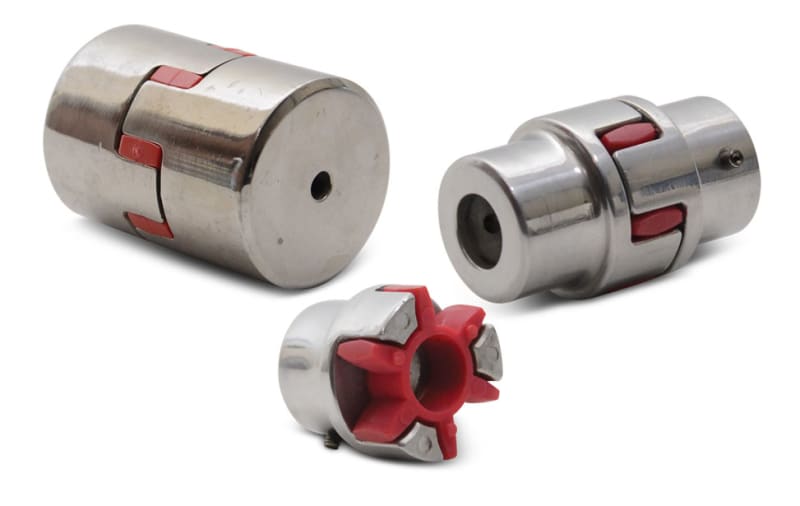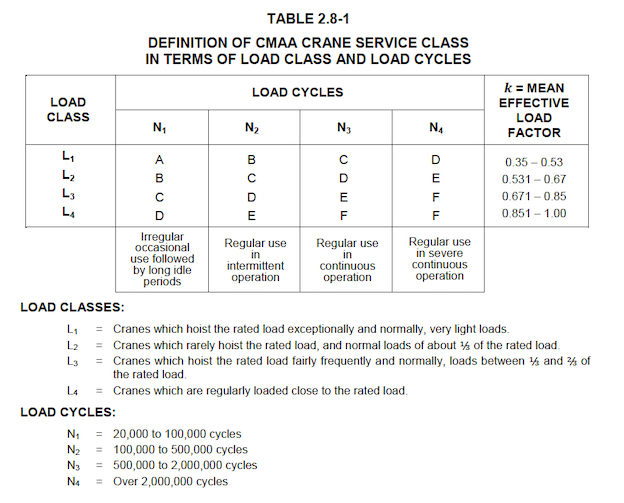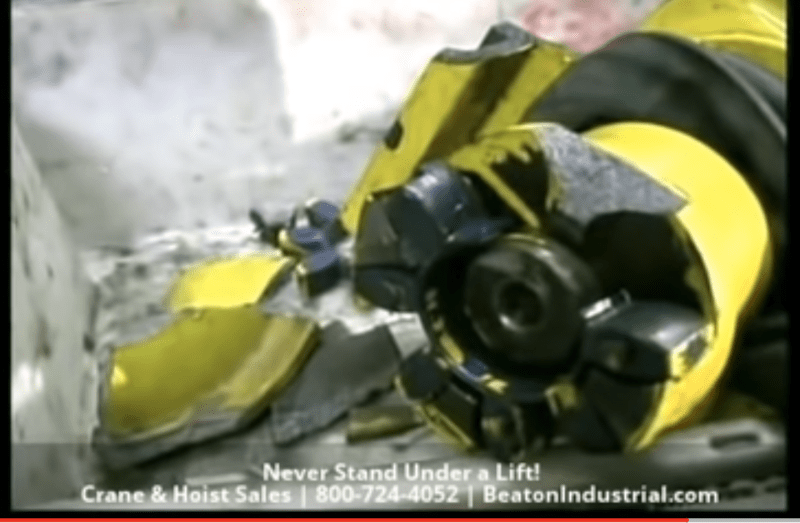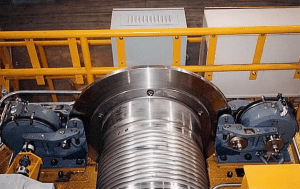xx said:
1. Isn't the broken part a cable sheave?
The failed part looks (to me) like a jaw coupling, which is a part I would expect between the hoist motor and the hoist gearbox.
The lower grade of these couplings is made from cast iron, note the brittle fracture surface. These couplings can be obtained in steel, which is less likely to fracture.
It is unusual for a crane of this size to have a mechanical load break, so failure of this coupling results in complete loss of load control, but the load will accelerate slowly as it is still connected to the inertia of the gearbox. I would expect much faster acceleration if the hoist rope failed.
XX said:
2. Isn't this probably a fatigue failure and not an issue with improper specification or procurement of parts? The crane is built to the specification required for the turbine hall. This wasn't an ad hoc decision to do the lift. This would all be planned for and checked before the lift.
The difference between a light duty crane, a heavy duty crane, and a port or steel mill duty crane is the design expected duty cycle. Turbine hall cranes tend to be designed as light duty, as the expected number of capacity lifts over the life of the crane is small. CMAA Class A, FEM 1C
m, ISO Class M2. Note the lifetime cycles and infrequent capacity loading in the table below.
XX said:
3. Isn't this a safety training video
But it looks like a real event (although some of the video could have been staged after the fact).





![[ponder] [ponder] [ponder]](/data/assets/smilies/ponder.gif)